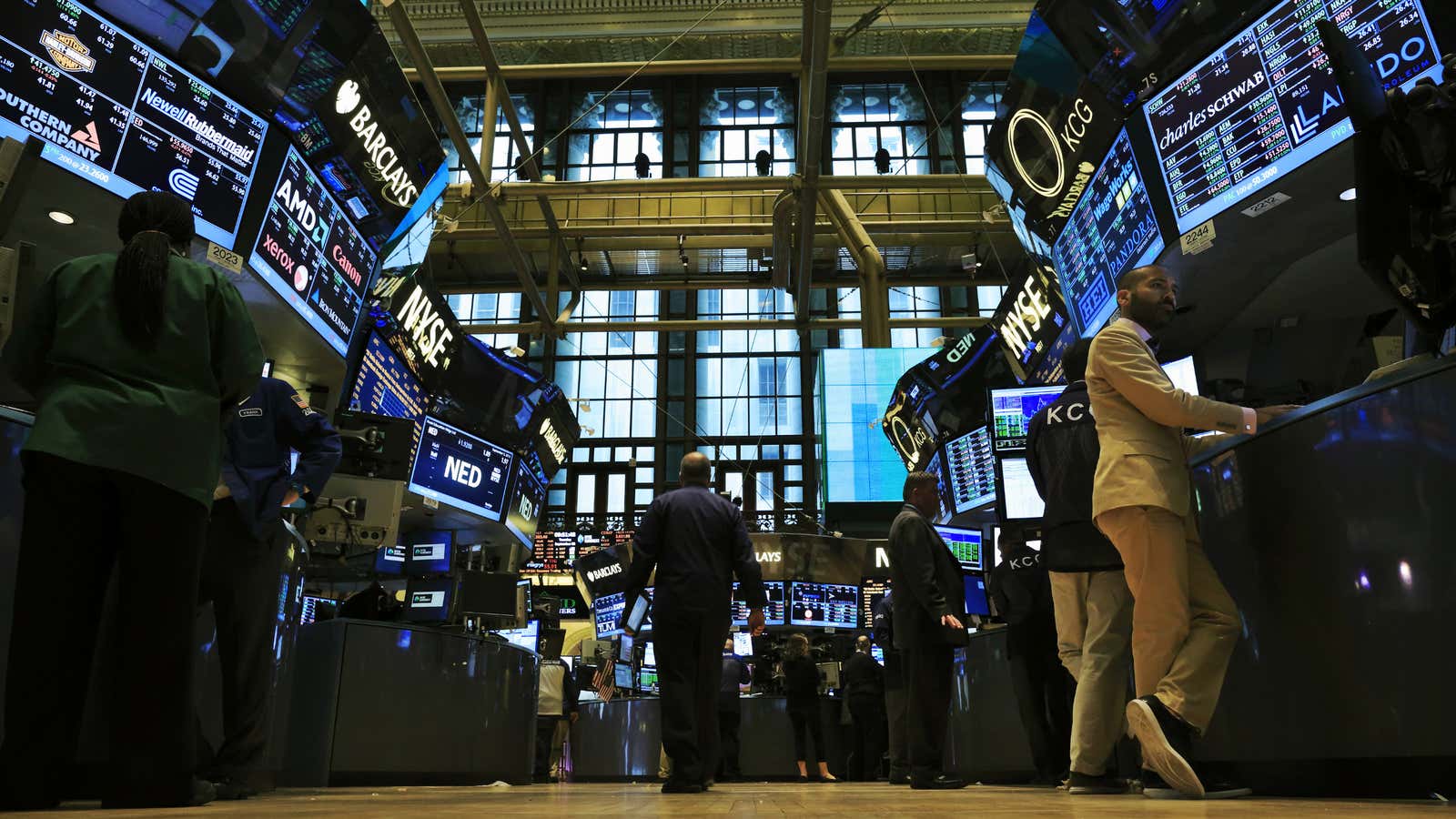A spate of recent trading glitches and problems in the US—most recently this morning, when a hiccup on the Nasdaq briefly affected some stocks—have brought higher scrutiny to the trading world. Such glitches always prompt the exchanges to conduct internal reviews and promise they’ll do better next time, but the rash of problems may be something no single company can really control: There are, critics of the system say, simply too many exchanges.
US-listed equities are traded on some 13 different exchanges. That’s not including “dark pools,” which carry out trades for institutional investors outside of the published prices. These exchanges all process quotes on the same securities simultaneously, transmitting them back and forth to a single Securities Information Processor (SIP). Each of the two SIPs, run by Nasdaq and NYSE, consolidates the best bid (buy) and ask (sell) orders for securities traded on those exchanges, and then determines what’s called the National Best Bid and Offer price (NBBO). That’s the price of a share you see at any given moment.
Two weeks ago the Nasdaq suffered a much more serious freeze which suspended all trading on it for three hours, after Arca, an exchange run by NYSE Euronext, lost touch with Nasdaq’s Securities Information Processor (SIP). As part of its normal distress system to prevent faulty trades, NYSE Arca apparently overloaded the SIP, pushing it to backup servers. Finally, a software glitch exacerbated the communication problem between the two exchanges, and the Nasdaq was forced to shut down.
The US Securities and Exchange Commission (SEC) has called a meeting with exchange executives on September 12 to discuss the problem.
Some experts suggest that a better system—both for fairness and for avoiding market glitches—might just be a simpler one. ”When you have an overly complex system with multiple points of failure the more chance you have a problem,” Joe Saluzzi of Themis Trading told Quartz. “These [exchanges] are a central part of the US stock market and when [we] crash it we look like a bunch of dopes worldwide.”
One reason there are so many exchanges is that they make money not only from trades but also from selling high-level data feeds to computerized trading desks, which profit off the ever-so-slight differences in price offered by different exchanges. ”The exchanges make a lot of money by providing these direct data feeds so there’s incentive to keep this system going,” Elaine Wah, a professor at the University of Michigan, explained to Quartz.
Market regulations, designed to make sure retail investors have access to the best price out there, arguably cement this status quo. The regulations route quotes to the best price offered by any exchange. This forces high-frequency traders to buy data feeds from all the different exchanges. That, in turn, keeps in business exchanges that might otherwise close because the volume of trading on them is low.
Even the SEC appears to be worried that this structure undermines the reliability of the markets. “There is virtually no competition” between market data feeds and exchanges “which could lead to little incentive in ensuring a high- quality product with minimal disruptions,” the SEC wrote in a controversial piece of regulation introduced in March.
Saluzzi points to the fact that four “families” of exchanges—the New York Stock Exchange, Nasdaq, DirectEdge, and BATS—own and operate a full ten of the 13 US exchanges. While some competition is good for markets, he thinks the current system is overkill. ”Maybe there’s a number that’s a lot smaller than 13 and bigger than one,” he says.
